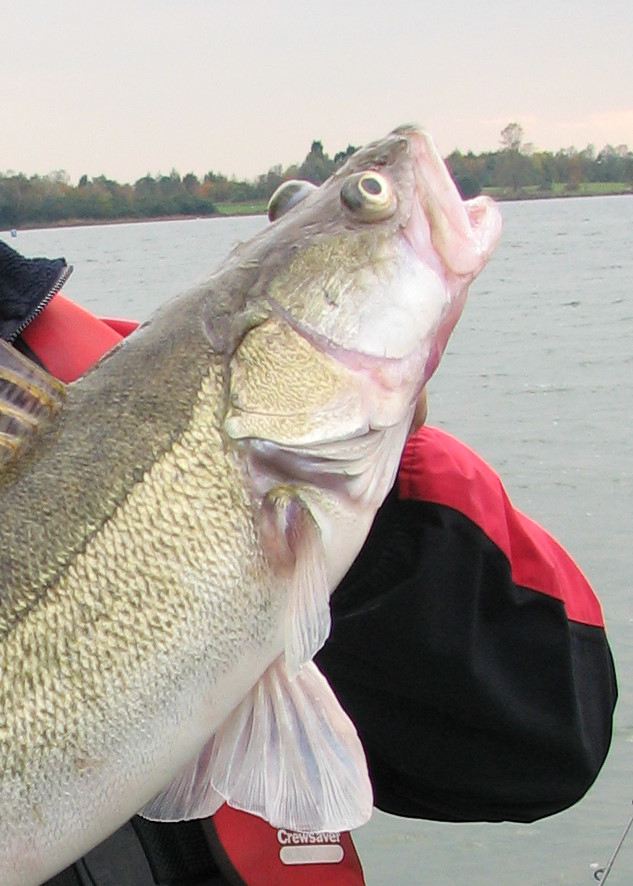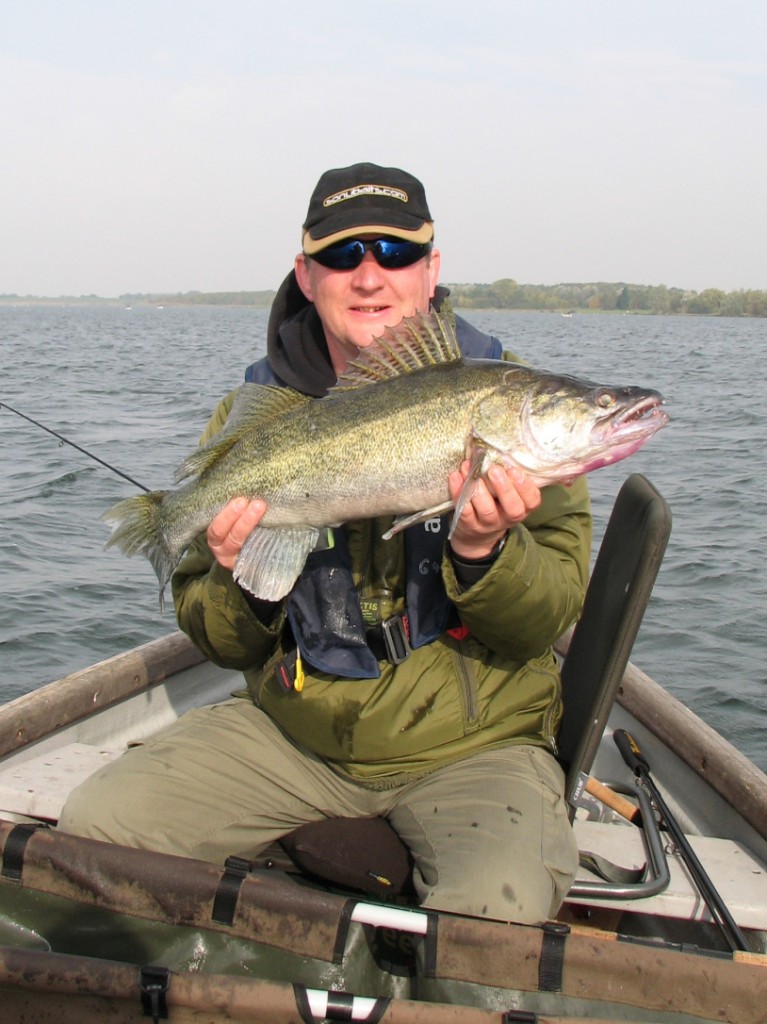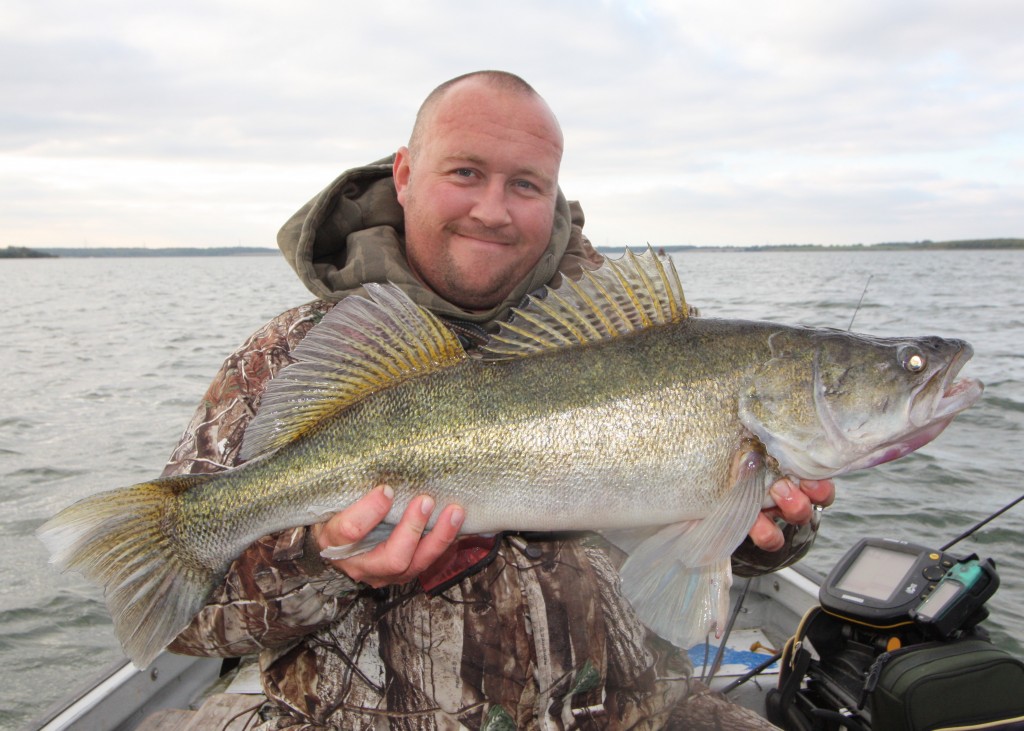Deadly Depths
This is an Article that I wrote and was first published in Pike and Predators in 2010!
There is a reason for re-publishing it; and that is because there currently is a lot of mixed messages being given out often by people that should know better about how to look after fish, namely Zander, with Barotrauma.
There is a common misconception (which I can understand) that relates capturing Deepwater fish and a diver decompressing as they return to the surface, now everyone knows that a diver will spend a long time getting back up to the surface to prevent gas bubbles building up in the body, – so it must be the same for a fish – right?
Well yes in the ideal world – if you want a zander to come to the boat in pristine condition play them for 3 hours, increase the depth a ten feet every 30 minutes and they will be fine. The chances of anyone doing this – is of course ridiculous. The only way zander can change the gas mixture in its gas bladder is to metabolise it through its blood and this takes time, far longer than any amount of slow winding by a factor of hours so playing them slowly will not help one iota.
The Article is still valid though the methods of capture and fish finders have moved on somewhat.
In summery to not kill Zander.
Play them up to the boat as fast as possible and get them back down as fast as possible. It is the length of time spent at a different pressure differential that will cause sometimes fatal damage to the fish.
Playing the fish slowly or taking too much time unhooking and photographing, or holding it by the boat for realise is in effect killing them with kindness.
The Deadly Depths
“All the Zander have died”,
“They have all been washed up on the bank after last year”
“You can hardly get a bite these days”
“Trout anglers have killed them all”
These are a few things I have heard about the fishing at Grafham water this year. The general feeling is that that the fishing has become a lot harder, however, I disagree, I would argue that the fishing has returned to the norm for Grafham.
The year that everyone was catching from one known feature has passed, and I would regard it as a blip, why were the fish were so concentrated, food perhaps?, water flow?, it’s open to debate, but it’s certainly not been as productive since. Hence the above statements.
I believe that there is still a healthy population of Zander present in the reservoir, but think that angler pressure has an effect on the Zander, how many rubber shads has a 15lb+ fish seen in its life?
I also think that they are certainly more spread out now, in smaller pockets. Where previously I had spots marked on my GPS that would hold 10 to 12 fish, the same spots now still produce, but in lower numbers.
Another factor that can’t be ignored is the loss of fish due to Barotrauma (the damaging effect of differences in pressure between the gas pressure inside the fish and the surrounding water). This may have caused a few fish to sadly die in the past. There are a few things we can do as anglers to prevent fish death, firstly, is not to fish for them, but assuming that you do, how can we minimise the risk to the fish?
Getting technical:
To understand Barotrauma, we need to know why it happens in the first place. There are several ways fish maintain their buoyancy in water, from having large quantities of oil in their livers, i.e. the sharks, to what will be more common to anglers, having air in a swim bladder, or to use the correct term gas bladder. However, not all gas bladders are the same.
In a Physoclistous fish, e.g. Zander / Perch, there is no connection or duct between the gas bladder and the intestinal tract.
In Physostomous fish, such as pike, there is a pneumatic duct present connecting the gas bladder to the gut.
There is some argument over the evolution of both physostomous and physoclistous fish, as to which are the most evolutionary advanced, but that is not in the scope of this article.
So why does the make up of the gas bladder affect the fish at all? Well here we have to look at what happens to a unit of gas at pressure. Without going into the mathematics of Boyles law, it can be roughly estimated that at 10 meters (33ft) water depth the volume of gas decreases by approximately half.
At 20 meters (65ft) the volume of gas decreases by 3 times.
If we take this the other way around a Zander sitting at 65ft with a gas bladder containing 1 litre of gas, on being caught and brought to the surface will have that gas expand on the way up to roughly three times. So effectively in a space that was full with 1 litre you now have 3 litres, and pressure on the internal organs etc.
It is not so clear cut as this though as the fish have evolved to cope with some degree of pressure change and because of their design i.e. internal membranes and muscles around the gas bladder, they don’t feel the effects straight away, and can cope with moving up and down in the water column for short distances and times
To anglers, what we want to know is how to cope with, and minimise the distress caused when we capture fish from deep water.
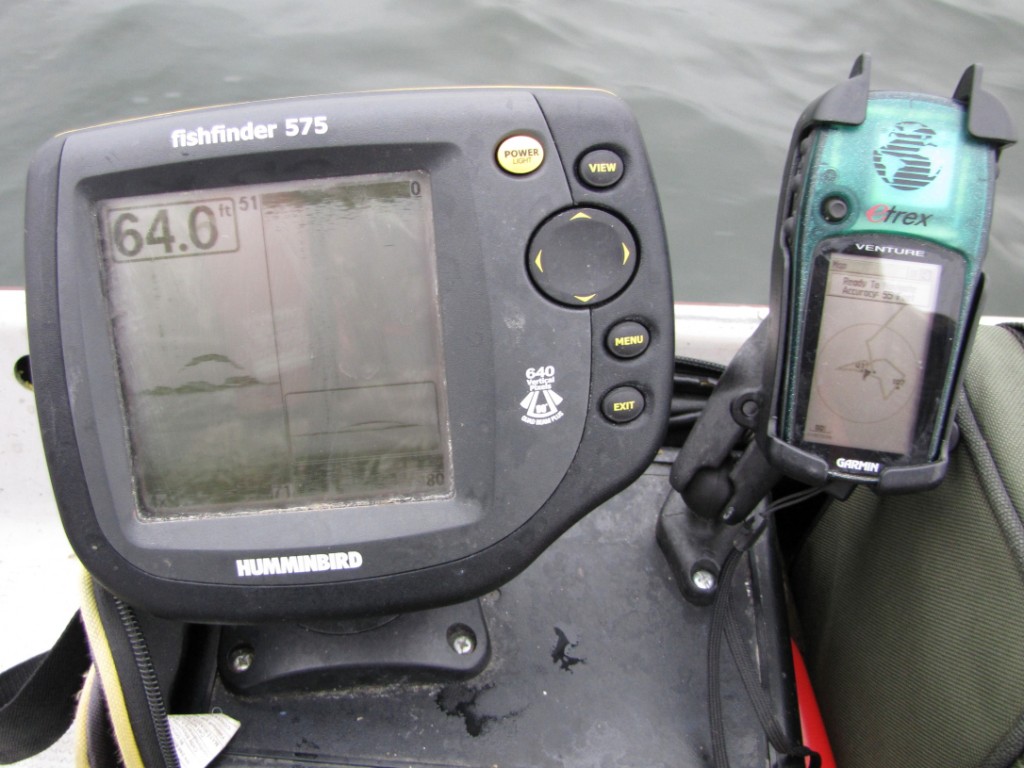
Is it right to fish at this depth?
Pike:
With pike, because the gas bladder is directly attached to the gut, any increase in volume of the gas can be, for want of a better word, belched out. It is not a belch as we would understand it, but a passing of gas from the gas bladder to the gut, once in the gut the gas can escape via the throat.
Sometime with deep water pike, they can “gas up”, but usually, with gentle massage of the gut area, gas is released and the fish will swim off ok.
Zander / Perch:
As these fish do not have a connected gas bladder, they can not get rid of excess gas in the same way as the pike. In fact the only way they can change the volume of gas is to metabolise it though the blood steam and the organs connecting the gas bladder. Effectively this means that the volume of gas is trapped and when you capture a Zander or Perch from deepwater the gas in the gas bladder has nowhere to go, but expand, stretching the gas bladder and putting stress on the internal organs of the fish.
Danger Time:
As soon as you hook a Zander from deepwater, and pull it up and out of the pressure band that it was sitting in, the clock effectively starts. The thing that kills deepwater fish is the time spent at lesser pressure gradients. I call this the “Danger Time”, and it needs to be kept to an absolute minimum.
I have heard anglers say that it is best to play them softly and let them get acclimatised to the depth changes. This is WRONG, as they can’t expel the gas, all that is happing is you are increasing the danger time to the fish.
You need to play the fish hard, get it in the boat and back down again as soon as possible.
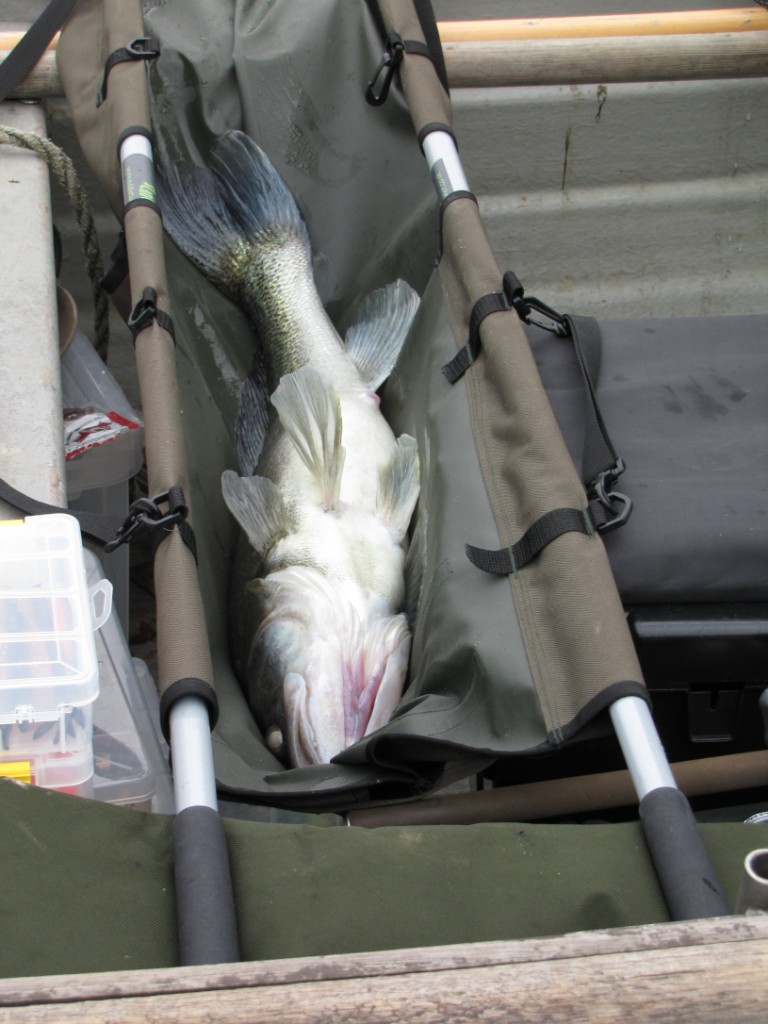
Having everything ready before you catch a fish – reduces the “Danger Time”.
Shocking:
This is the most common method used to return Zander. If you gently cradle them in the water and wait for them to swim off, they will experience more baratrouma as you are increasing the “danger time”. Because they are effectively getting more and more pressure as you hold them waiting for them to swim off, you are actually doing more harm then good.
The best way to get the fish back quickly is to throw them back in, we are not talking a Geoff Capes hammer throw, but just dropping them, head first straight into the water. This causes a shock reflex on the Zander and they instinctively power off back down to the bottom.
This goes against the grain for any angler used to being careful with their catch, but it works, and works well.
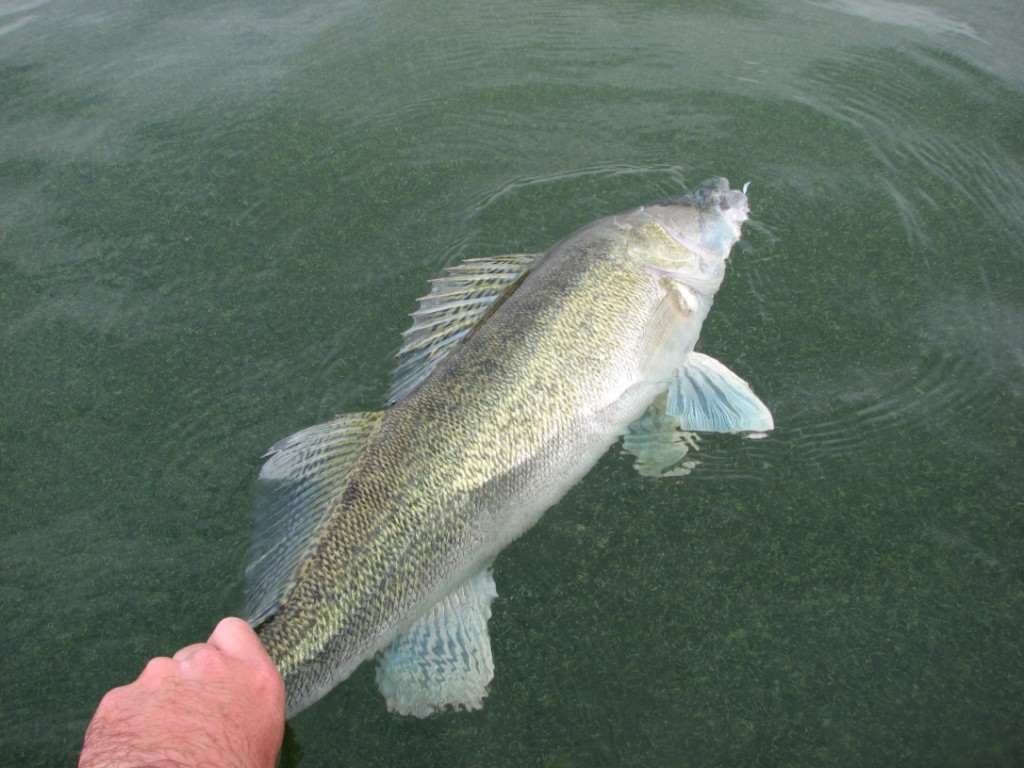
How not to do it – Holding a deep water zander like this is “Killing it with kindness”.
We have looked at ways to prevent or rather minimise the gassing up of fish.
But some times you will get a “gassed” fish for no other reason then the amount of time the fish has been at that depth. i.e. a fish that has been at 60ft for a week or more will have metabolised more gas into its gas bladder then a fish that has just moved to that spot from say 20ft of water, and therefore will have a greater volume of gas in its gas bladder when it is pulled to the surface.
How do you get a balloon to skink?
Two ways;
Add enough lead to it and it will sink.
Or pop it.
Lead Balloon:
Basically you’ve caught your fish, and for whatever reason it’s gassed up, it won’t swim back on its own accord, even after trying the “shocking” method, and the longer it stays on the surface the more damage is being caused internally.
I have shown this method to a few people, who have used it successfully on Grafham and other waters, and I believe that several anglers now won’t go out with out this in their tackle bag.
What you need is a large enough lump of lead to take the fish down to the bottom, where the pressure on the fish will equal out and reduce further internal damage.
I use a 2lb sea lead and have attached to this a large inverted catfish hook around 10/0 with the point and barb cut off. You will also need a spare rod and some heavy braid to clip it on to.
What you do it place the hook just behind the gill slit, the area that you would normally put your fingers when handing the fish. Then let the lead take the fish back down to the bottom, as long as there is no resistance to the line on the drop back down, the lead will pull the fish back down, then once on the bottom the fish will come off as you reel the lead back up as the hook is inverted.
Venting:
Venting is just one of several methods currently used by some anglers to treat fish suffering from barotrauma. It has been common practice with some deep water reef species and there is some evidence of a recapture rate of up to 60% on vented fish in Australia.
The practice of venting is to using a large bore hypodermic to effectively pop the gas bladder of a fish suffering from barotraumas and release the gas, so the fish can swim back down to the correct depth.
The puncture area on Zander is roughly level with end of the pectoral fin
You need to place the needle under the scales and through the skin deep into the fish to achieve the correct result, and there is a high likelihood of causing further damage to the internal organs etc.
All I can say is that, yes it works, yes I have used it, but unless you know exactly what you’re doing, I would regard this as a very last resort method.

Small zander as less susceptible to Barotrauma due to body length / gas bladder ratio.
Conclusions:
There are no doubt some anglers out there that will not fish for deep water Zander, and it has been mentioned on the “Pike and Predators forum” several times, sometimes by people that should know better, that “all Zander caught at depth die” and as such we shouldn’t be fishing for them. Maybe, and there is a proportion of truth in that, but others would say the same for summer fishing, for example how many Zander need to be propped up with bank sticks?
I believe that if you are sensible with your approach, have the correct equipment, and go prepared, then you will do little harm to the Zander.
It is when, you get an inexperienced angler catching what can possibly be a PB fish that problems occur, multiple photos, weighing, getting friends from other boats to see etc. all increased the “danger time” and can lead to dead fish bobbing around.
I can understand this to a certain degree, as not every angler will have the experience of deep water fishing, and my get too exited about a big Zander, we have all done that.
So do we know that fish survive at all if caught from depth? Well I have had some recaptures, though it is hard to tell some times, one Zander looks a lot like another. It would be useful to tag and use marked recapture to get a better idea of survival rate, but then you will be increasing the “danger time” by tagging and recording!
I know there have been multiple recaptures on the same day at Rutland from 70ft of water, but these are smaller fish, and as such don’t experience such a severe effect of baratrauma due to body mass.
I will leave you with two photos, of the same fish, caught three years apart from the same spot. On the first capture, by Neil Sampson on opening day 2007, it gassed up slightly and we returned it by lowering it down on the releasing device, it weighed just under 10lbs. Three years later I caught the same fish that had put on 2 ½ lbs so that one had 100% survived the “Deadly Depths”, at least once.
Note; the same fish was caught again a couple of years later which shows that they do survive being caught from depths if looked after correctly – it also shows how relatively few double figure zander are in Grafham and how vulnerable that can be to exploitation.
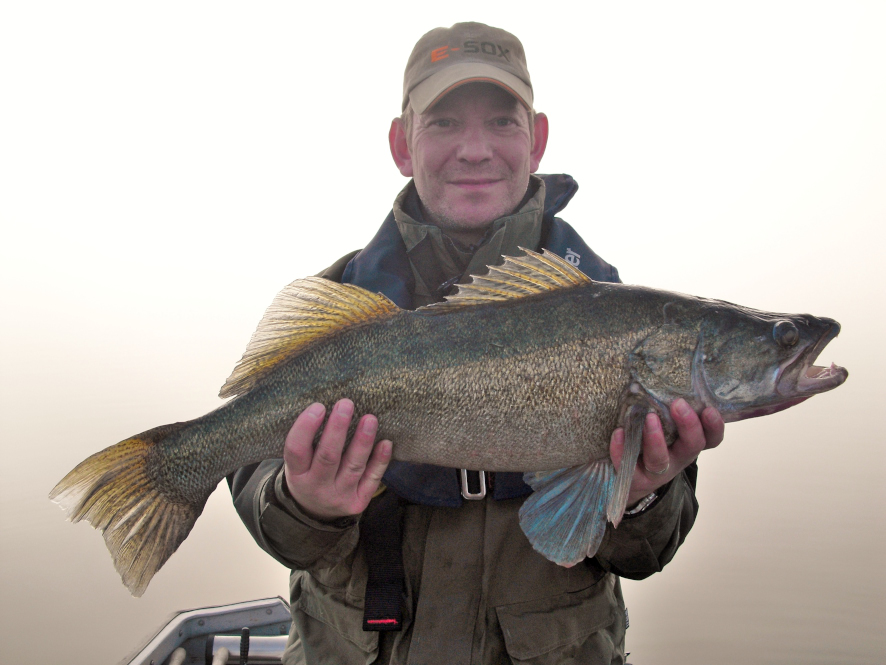
If you only take one thing from this article, take this, don’t mess about, and get the fish back down to the depth it came from within the shortest time possible.

